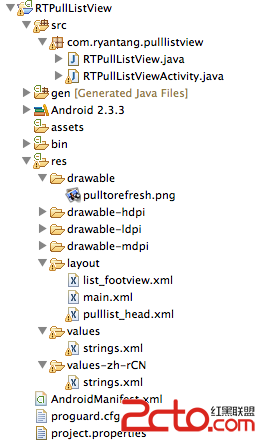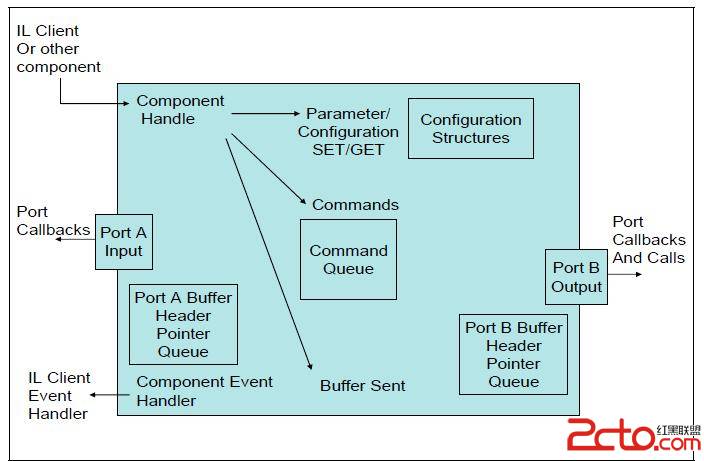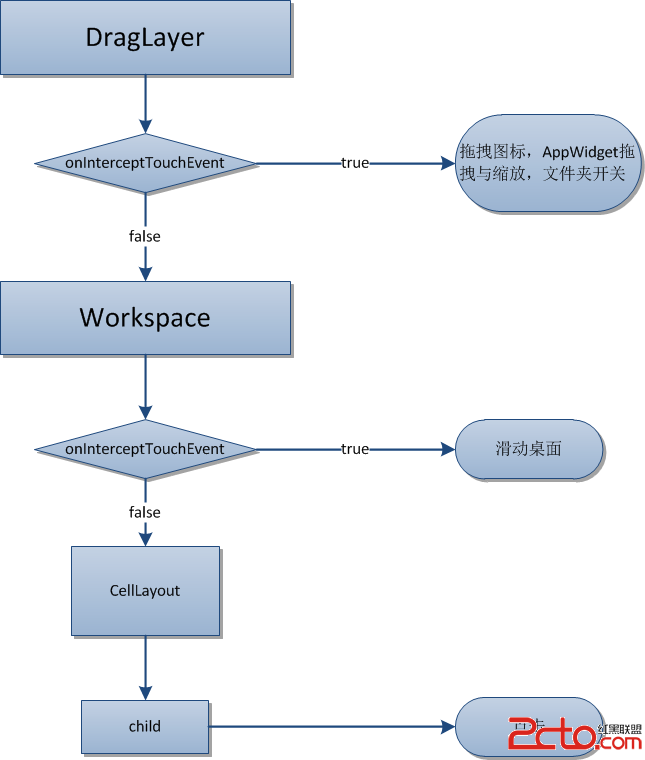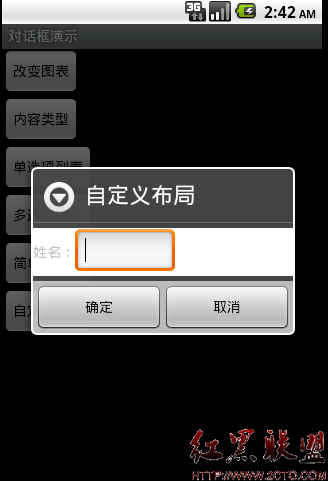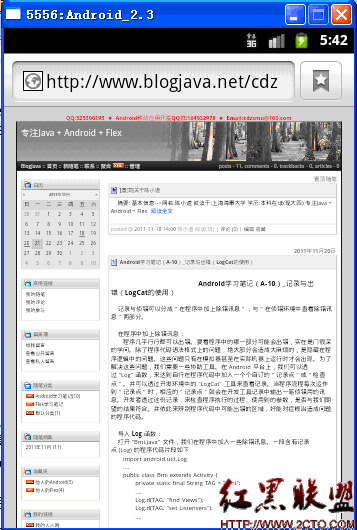Android进阶练习-自定义视图实战之刷新等待进度条
实现一个最简单的自定义视图(不包含处理用户的触摸事件),往往只需要三步一、继承自一个View(可以是一个更具体的Android已实现好的View),并增加必须的构造方法(这个根据自定义View怎么使用来判断)二、覆写onDraw(Canvas canvas)方法,并且自定义绘制三、重绘,分为实时重绘和属性更新重绘自定义视图如果是继承自原始View的话,public View(android.content.Context context)这个构造方法是必须的。而public View(android.content.Context context, android.util.AttributeSet attrs)这个构造方法是可选,但如果你想在xml布局文件中使用自定义视图的话,带属性的构造函数也是必须的,因为Android系统是根据这个构造函数去实例化视图的,这样也可以让我们的视图可视化,配置的属性值也能够根据它来获得关于自定义绘制,需要注意的是Android框架已经为我们提供了很多的方法来绘制各种图元,直接使用就行了,要记住的是自定义视图并不会自己主动的去重绘自己,首次显示会绘制一次,往往需要我们去通知它进行重绘,可以在视图上调用invalidate()和postInvalidate()来通知重绘,两者的区别稍后会进行解释重绘,有些视图往往需要实时的进行重绘,像一些实时性很强的游戏,但这个一般需要使用到Su易做图ceView,有兴趣的话可以去学习下,我们今天的例子也需要进行实时重绘,但没有使用到Su易做图ceView,而是继承于View。有的时候可能并不需要实时进行重绘,像只有在改变了视图的一个属性值的情况下才需要重新绘制,这个时候我们可以在setXX()方法中调用invalidate()方法就行下面是一个等待进度条的例子[java]package tu.bingbing.customdialogview.view;import tu.bingbing.customdialogview.R;import android.content.Context;import android.graphics.Bitmap;import android.graphics.BitmapFactory;import android.graphics.Canvas;import android.graphics.Paint;import android.util.AttributeSet;import android.view.View;public class CustomDialogView extends View {// 加载图片资源id,存入缓存数组private final int[] ids = new int[] { R.drawable. loading01,R.drawable. loading02, R.drawable.loading03, R.drawable.loading04 ,R.drawable. loading05, R.drawable.loading06, R.drawable.loading07 ,R.drawable. loading08, R.drawable.loading09, R.drawable.loading10 ,R.drawable. loading11 };private Bitmap[] loadingImgs ;private Paint loadingImagePaint ;private int currentIdsIndex = 0;public CustomDialogView(Context context, AttributeSet attrs) {super(context, attrs);init();}public CustomDialogView(Context context) {super(context);init();}private void init() {// 实例化画笔loadingImagePaint = new Paint();// 设置抗锯齿loadingImagePaint.setAntiAlias(true);// 一次性放进缓存数组中loadingImgs = new Bitmap[] {BitmapFactory. decodeResource(getResources(), ids[0]),BitmapFactory. decodeResource(getResources(), ids[1]),BitmapFactory. decodeResource(getResources(), ids[2]),BitmapFactory. decodeResource(getResources(), ids[3]),BitmapFactory. decodeResource(getResources(), ids[4]),BitmapFactory. decodeResource(getResources(), ids[5]),BitmapFactory. decodeResource(getResources(), ids[6]),BitmapFactory. decodeResource(getResources(), ids[7]),BitmapFactory. decodeResource(getResources(), ids[8]),BitmapFactory. decodeResource(getResources(), ids[9]),BitmapFactory. decodeResource(getResources(), ids[10]) };}@Overrideprotected void onDraw(Canvas canvas) {// 循环控制每一张图片的绘制顺序,让看起来像是播放动画if (currentIdsIndex >= (ids .length - 1)) {currentIdsIndex = 0;}Bitmap currentLoadingBitmap = loadingImgs[currentIdsIndex ];// 绘制图片,显示在屏幕正中canvas.drawBitmap(currentLoadingBitmap, (getWidth() - currentLoadingBitmap.getWidth())/2,(getHeight() - currentLoadingBitmap.getHeight())/2, loadingImagePaint );补充:移动开发 , Android ,上一个:Android Handler用法
下一个:Android自定义弹窗进度条

